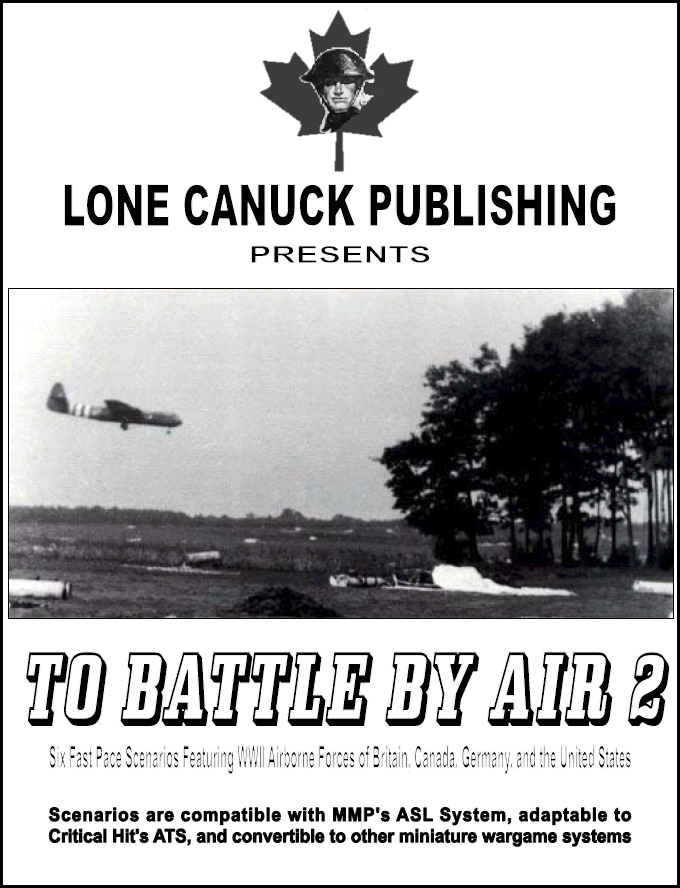

This six scenario pack revolves around the battles involving the Airborne and Paratroop forces during World War 2 and is compatible with MMP's ASL System.
Rotterdam, Holland, 10 May 1940: The Allied Forces of Britain, France, Belgium, and even neutral Holland had drawn the majority of their forces up to their borders with Germany in preparation for the seemingly enviable attack by the Germans. The attack on Rotterdam was carried out by 700 Fallschirmjägers and in a most astonishing and daring attack, a dozen Heinkel HS 59 seaplanes ferried 120 men of the 16.Infanterie Regiment into the centre of the city, where they landed on the Maas River– disembarking the men on the quayside at either end of the bridge.
Southwest of Carentan, France, 13 June 1944: The Battle for Carentan lasted three days and by 12 June, the US 101st Airborne Division had encircled the town in a bold pincher movement. However, just as the American paratroopers were entering the town, the German commander, Major Von der Heydte, facing encirclement and short of ammunition, had that morning ordered his forces to withdraw, and set up a new defensive line southwest of Carentan. Von der Heydte and his Fallschirmjäger Regiment 6, were now under command of the just arrived 17.SS-Panzergrenadier Division Götz von Berlichingen, whose commander was enraged at Von der Heydte’s withdrawal; ordered an immediate counter-attack on Carentan.
East of Le Mesnil France, 7 June 1944: The 1st Canadian Parachute Battalion regrouped at the Le Mesnil crossroads during the night of June 6, where it received a resupply of 3-inch mortars, which it lost in the marshes during the previous night’s drop, and much-needed ammunition. The next morning, a strong German infantry force from the German 857. Grenadier Regiment, supported by tanks and self-propelled guns moved into position for an attack; however, were driven off by a salvo of PIAT bombs and bayonet counter-attack by B Company. The Germans withdrew 200 yards back up the road, seeking refuge in a small-fortified farmhouse, from where they continue to harass the Canadian’s position with machinegun fire.
Riethorst, Holland, 18 September 1944: For Operation MARKET-GARDEN, the US 82d Airborne Division had the onerous tasks of seizing the bridge over the: Maas at Grave, the railroad bridge over the Maas-Waal Canal, and the bridge over the Waal at Nijmegen. Thereafter, it was to hold and secure, the dominating feature located southeast of Nijmegen- the Groesbeek Heights. Because of the threat of imminent attack from the Reichwald, the 1st Battalion’s Commanding Office, Major Talton “Woody” Long responded by sending reinforcements to assist in the defence.
Nijmegen Holland, 19 September 1944: By early afternoon of 19th, the German forces defending the two Nijmegen bridges were formidable: over 2,000 men, four 88mm guns, and numerous light anti-aircraft and anti-tank guns. Lieutenant-General Sir Frederick “Boy” Browning, commander of the Allied 1st Airborne Corps told the 82d’s General Gavin, “The Nijmegen Bridge must be taken today. At the latest, tomorrow.” Gavin immediately ordered the 2d Battalion, 505th Parachute Infantry Regiment to move into Nijmegen and capture the highway and the railroad bridges over the lower Waal. The Western Force responsible for the capture of the railroad bridge was comprised of Company D, 505th Parachute Infantry Regiment; a troop of tanks from 2nd Battalion, Grenadier Guards, and a platoon of infantry from the 1st Battalion, Grenadier Guards.
South of Hamminkeln, Germany, 24 March 1945: For Operation VARSITY, the British 6th Airborne Division would drop and land on the northern half of the area. Its objectives were the high ground east of Bergen, the town of Hamminkeln, and certain bridges over the Ijssel. The 1st Battalion, The Royal Ulster Rifles of the 6th Airlanding Brigade was tasked to land on LZ “U” to the south of Hamminkeln and seize the bridge over the Ijssel River on the main road to Brunen. D Company, commanded by Major Tony Dyball, landed on LZ “U1” which was astride the Ijssel, his own glider touching down in the lead about 150 yards from the bridge, which was the objective. As it landed, it came under fire from a machinegun 75 yards away.
Map Boards Required: 8, 20, 23, 33, 40, 42, 44, 49, & v